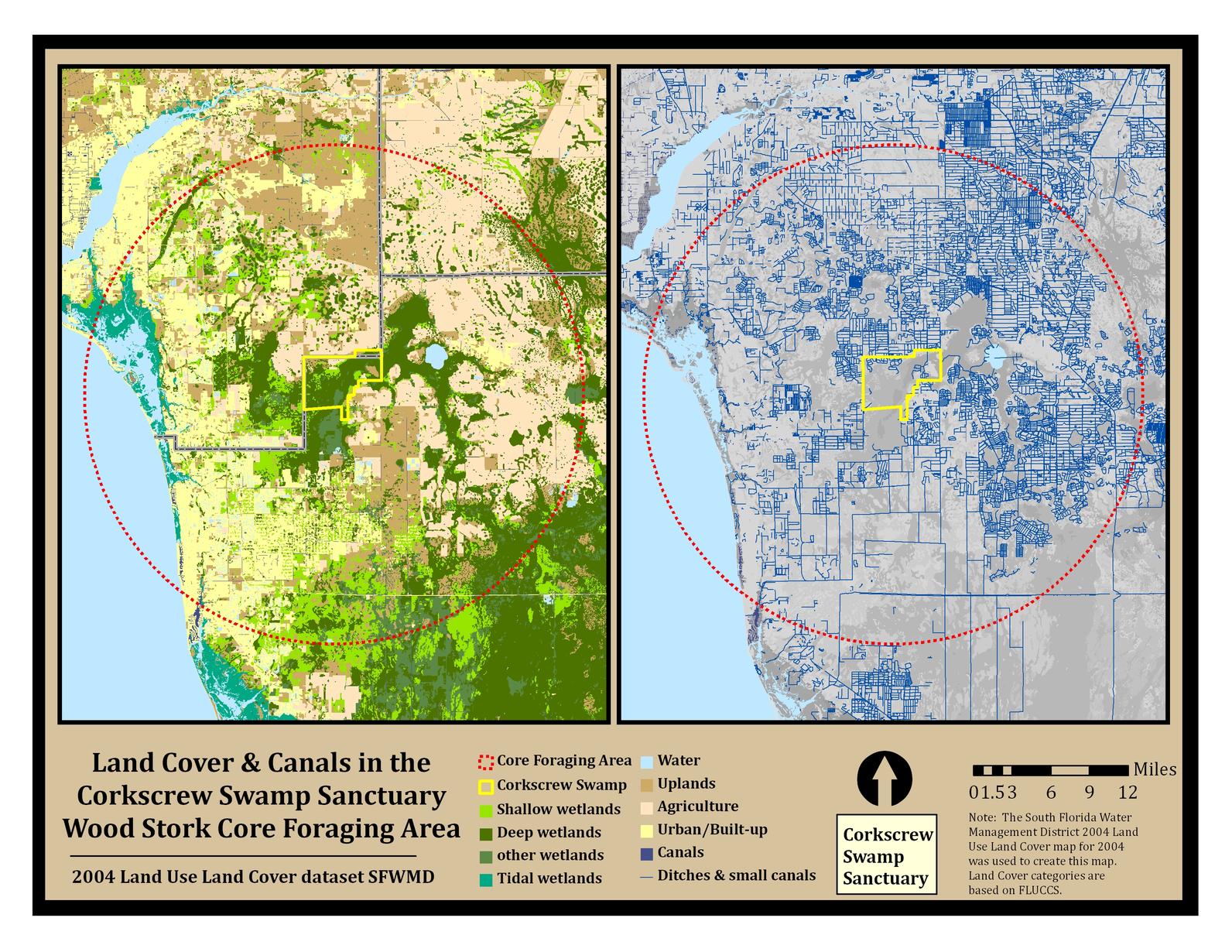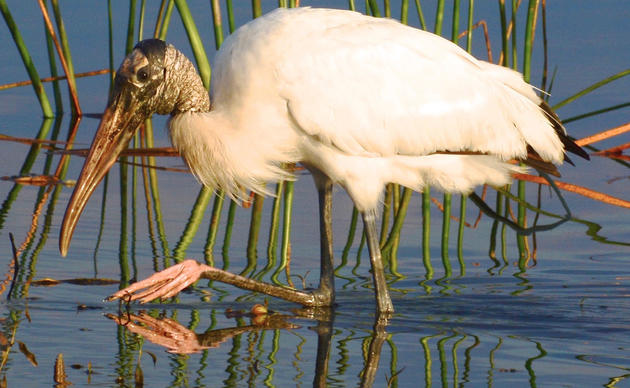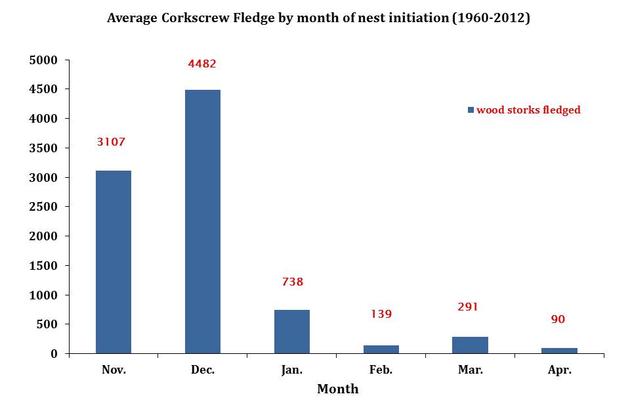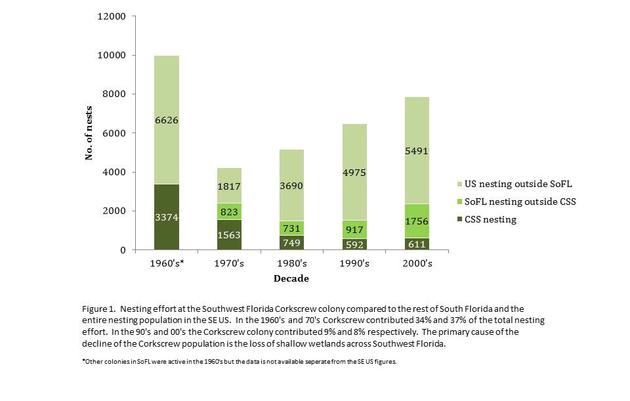Corkscrew Swamp Sanctuary’s old growth bald cypress forest is our nation’s most celebrated historic Wood Stork (Mycteria americana) colony. According to Thomas Gilbert Pearson (in “the Bird Study Book”, 1917), it once supported an estimated 100,000 storks. Audubon has monitored this colony since 1958, making it the longest-running continuous data set on Wood Stork nesting in the nation. Having supported approximately 75,000 nests and fledging an estimated 100,000 chicks since 1958, it is the most productive colony in the nation.
Wood Storks as Indicators of Wetland Health
In the Everglades, Wood Stork nesting success is dependent upon the hydrology of the wetlands where storks forage. Hydroperiod (the period of time a wetland has standing water) and the speed and pattern of water level recession during the dry season control the production and availability of aquatic prey (small fish and crayfish) that provide the required energy for building nests, caring for eggs, and fledging young. These connections are so critical that Wood Storks are considered an indicator species for Everglades restoration.
The Greater Everglades is marked by a wet/dry cycle created by an intense four-month rainy season (June-September) followed by eight months of drying conditions. During the rainy season, widespread flooding connects wetlands with surface water flowing across the flat landscape. Rising waters connect isolated wetlands, allowing fish and other aquatic fauna to disperse across the landscape, multiply and grow. During the dry season (October-May), a long, slow recession of surface water isolates small depressions at the edge of the larger wetland complex, and traps concentrations of aquatic organisms that become prey for wading birds, otters, and alligators (among others). These concentrations of prey are critical for Wood Storks who are tactile feeders, feeding by touch in shallow water (less than 16 inches).

In recent decades, an extensive network of canals, ditches and roads were constructed, resulting in widespread drainage and fragmentation of wetlands throughout South Florida. These changes to the landscape coincide with a marked decline in Wood Stork nesting across the Everglades and a resulting decline in the Everglades Wood Stork population. Because Wood Storks are highly adapted to the natural historic “pre-drainage” conditions, conventional wisdom predicts that restoration of the wetlands impacted by development would result in increases in the breeding effort and population of wood storks in our region.

Scattered records of Wood Stork nesting at Corkscrew date as far back as 1914 and National Audubon Society has been monitoring the colony since 1958. Nesting effort has declined markedly during that time (below). Productivity (number of chicks fledged) has dropped from an average of 5,450 chicks/year in the first 10 years of monitoring (1958-67) to 287 chicks/year in the most recent decade (2007-2016). Wood Storks have only nested at the Corkscrew colony twice in the past 10 years (2009 and 2014).
Audubon's Western Everglades Research Center staff continues to work to better understand the decline of Corkscrew's Wood Stork colony. Research findings are used to help drive conservation policy decisions and wetland restoration projects that will benefit Wood Storks and other native wildlife.
Related
Conservation Status of Wood Storks
The U.S. Fish and Wildlife Service listed the US breeding population of Wood Storks as endangered in 1984
How you can help, right now
Donate to Protect Corkscrew's Birds and Wetlands
Make a meaningful and lasting gift to protect Corkscrew Swamp Sanctuary's rare Everglades habitat.
Become a Member
Join an extraordinary and growing community of members dedicated to supporting the conservation of natural ecosystems throughout the Western Everglades.
Sign Up for the Corkscrew eNewsletter
Stay connected to Corkscrew Swamp. Sign up for our monthly online newsletter.






